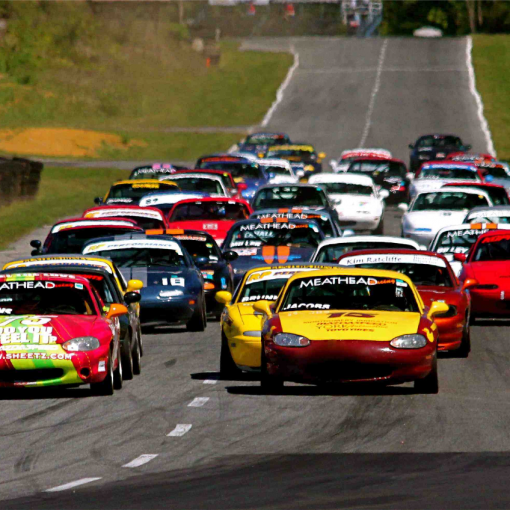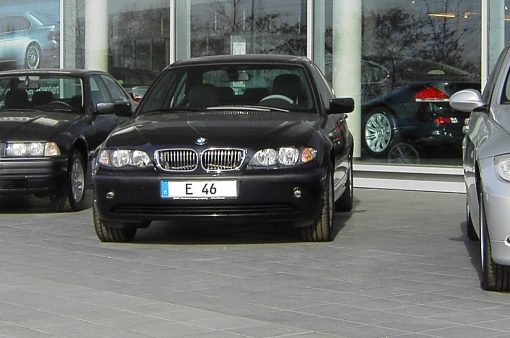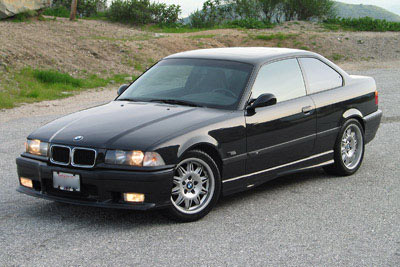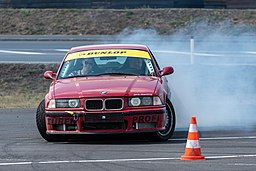History
Porsche’s first air-cooled 911 was introduced in 1997 for the 1998 model year. Although much ridiculed for its Boxster-derived “fried egg” headlights (as a cost cutting measure, all lights were integrated into one unit, and the 911 shared the entire front end with the Boxster), it was a sales success.
The initial engine offering was a 3.4l, producing 300hp. A convertible and a four-wheel-drive version (Carrera 4) were offered as well. The turbo, with revised headlights, debuted in 1999. In 2001 (2002 model year), the 911 was facelifted, with all models now receiving the turbo-style headlights. The naturally aspirated Carrera models now received a 3.6l engine with 320hp.
The 996 also marks the introduction of the GT3 and GT2 models as track-oriented derivatives, replacing the previous RS models. The GT3 is naturally aspirated, the GT2 is a turbo, but rear-wheel drive only. The facelifted GT3 was also available as GT3 RS.
The successor 997, which reverted back to the round headlights but was technically very similar, was introduced in 2005.
Pros
- Early 996 Carrera models are the cheapest 911s you can buy these days
- Relatively light-weight
- Decent brakes
Cons
- The well-publicized IMS bearing issues. This problem can be permanently solved, but it costs money.
- Other engine issues (cracked heads and cylinder liners, bore scoring)
- Porsche part and labour prices
Recommendations
The most interesting 996 for track use are the two-wheel drive Carrera models, and I’ll focus on these here. The turbos are less pure, the GT3s and GT2s are quite expensive – if you’ve got that amount of money to spent, I’d rather take a look at a Cayman GT4 – although a GT3 does of course have a charm of its own.
I’ve written an extensive buyer’s guide on my other website. Summary: buy a car with complete service history, have a pre-purchase inspection done, and if it’s a car with the small single-row IMS bearing, consider replacing it if it hasn’t been done already. For track use, the preference would be a car without sunroof and with the factory limited-slip differential.
The first update for track use should be the cooling system, as several experts point to cooling issues as the main cause of engine failures with the M96 engines. Add the center radiator that was standard on the GT3 and most Tiptronic cars, and a thermostat that opens at a lower temperature.
Handling will benefit greatly from new suspension. Here the 996 can’t hide that it is a 25 year old car. I’d start with at least lowering springs (especially if the car came without the sports suspension package) and better shock absorbers, but if you’re serious about tracking your 911, invest in a good coilover set. From there you can progress with GT3 control arms and adjustable anti-roll bars.
Unlike previous 911s, the 996’s M96 engine no longer has a true dry-sump lubrication system. Prolonged high G-forces (think modern sticky rubber) can lead to oil starvation. You can buy oil sump spacers and baffles that both increase the oil capacity and reduce the splashing about of the oil in the sump. Just keep in mind that, combined with a lowered suspension, your oil sump will be quite a bit lower – consider a skid plate for additional protection. You should also upgrade to the motorsports air-oil separator and use good oil. These may still be only partial solutions (opinions vary in this regard), but if you are serious about track driving and want to use slicks, buying a 996 GT3 might be cheaper than buying a Carrera and blowing up the engine.
The brakes are decent for light track use, you can of course always upgrade to bigger rotors and calipers. If you stick with the stock brakes, consider better brake pads. The Ferodo DS2500 e.g. are Ok for dual use, for track use only the Pagid RS29 pads are popular.
I’d consider a limited-slip differential a must have item. I believe they were standard on cars optioned with the traction control or sports package.
Don’t worry about getting more power out of the naturally aspirated engines – it’s pretty much impossible without a major investment. If 300 or 320hp isn’t enough, consider saving some more money for a 997.




